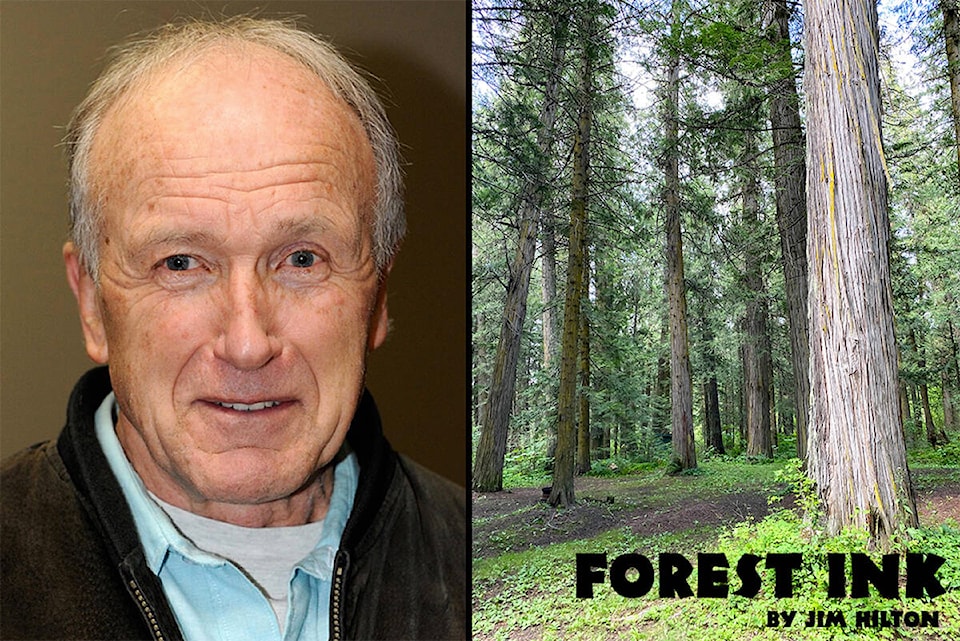As I was researching information for writing this article, it was apparent that this was another example of science-based information on issues like climate change, COVID vaccinations and many other biodiversity issues.
The main emphasis of a new report is the very rare nature of our most productive forest growing sites in the province. Only a tiny proportion of B.C.’s remaining old forest (3 per cent) supports large trees. Under 400,000 hectares have a site index of 20 – 25 metres, and only 35,000 hectares of old forest have a site index greater than 25 metres. A site index of 25 means it takes 50 years to grow a tree 25 meters tall. Old forests on these sites have dwindled considerably due to intense harvest. Only 2.7 per cent of this 3 per cent is currently old. These ecosystems are effectively the white rhino of old growth forests. They are almost extinguished and will not recover from logging for many decades. This information comes from a document published in the spring of 2020 entitled B.C.s Old Growth Forests - A Last Stand For Biodiversity. It was published by a small independent company from Nelson. Authors Karen Price, Rachel Holt and Dave Daust used site index to separate the most productive and important growing sites from the rest.
My concern was how we almost eliminated some of our most productive old growth forests. I got some insight from a book my wife was reading entitled Subtract by Leidy Klotz who describes the human tendency to add before we take away. It seems our biological, cultural and economic forces push us towards more. But the author goes on to describe how we have a choice to do better. Applying this tendency to our treatment of our productive old growth forests is how we have converted 97 per cent of our most productive forests into volume-based production at the expense of long term values of ancient forests with big old trees but people are still being arrested for trying to protect what is left.
It is not too late for us to leave a legacy for future forest managers who will need a much different approach to management of old growth forests especially with the impacts of climate change and potential pressure from wildfires and forest pests.
Over 85 per cent of productive forest sites have less than 30 per cent of the amount of old expected naturally, and nearly half of these ecosystems have less than 1 per cent of the old forest expected naturally. This current status puts biodiversity, ecological integrity and resilience at high risk today. The authors of Old Growth Forests suggest the following key actions:
1 – Immediately stop harvesting the rarest of the rare. Retain all old forest in any ecosystem with less than 10 per cent old remaining in order to preserve opportunities to implement existing old forest targets effectively.
2 – Focus retention on higher productivity sites and irreplaceable very old/ancient forests.
3 – Where little to no old remains today, focus retention on productive mature stands, particularly in places with a long harvest history.
4 – Develop and implement ecologically defensible targets for old forest (e.g., minimum of 30 per cent).
5 – Improve implementation to ensure that old forest retention protects the last remaining productive old forests, and protects functional forests for the future.
The transition from old forest harvest is imminent. Without immediate action we will lose these globally priceless values — and still have to deal with a volume-based industry that has not planned ahead for transition.
The provincial government must provide funding, commitment and management authority to ensure that staff can implement effective forest conservation. Little human effort is tasked with protecting old forest values, while much is focused on harvesting. I encourage readers to look at this article which includes detailed maps and charts demonstrating the data discussed above.
Jim Hilton is a professional agrologist and forester who has lived and worked in the Cariboo Chilcotin for the past 40 years. Now retired, Hilton still volunteers his skills with local community forest organizations.
